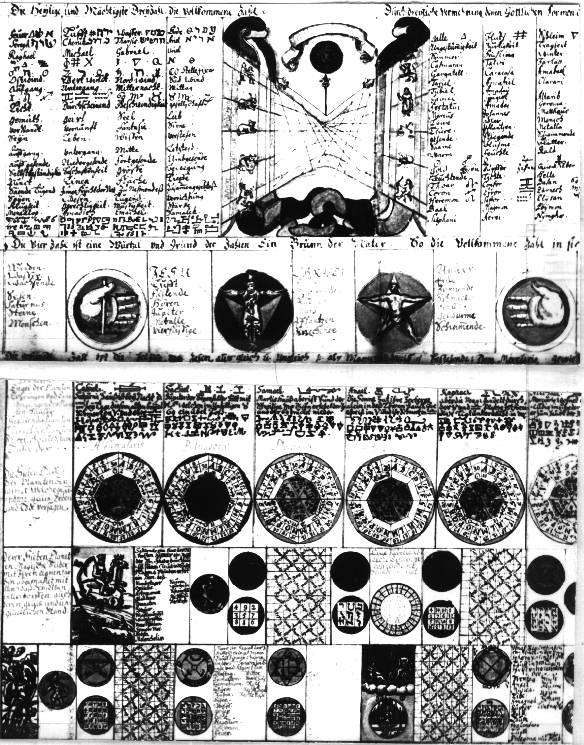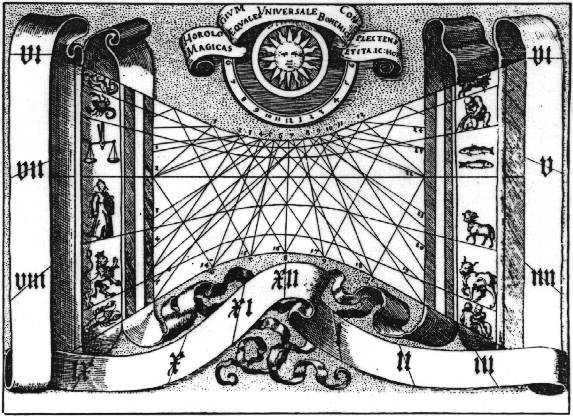|
|
Rafal T. Prinke - The Wroclaw codex of the Magical Calendar.Article originally published in The Hermetic Journal, 28 (1985), 26-29.THE WROCLAW CODEX OF THE MAGICAL CALENDARThe importance of the Magical Calendar attributed to Tycho Brahe was discussed by Adam McLean in his edition of it (Magnum Opus Hermetic Sourceworks No. 1). He also compared the engraved Latin version published in 1620 with the manuscript copy in Vienna and found that the latter contains a number of misspellings and therefore that the published version is earlier. But is it the original or was there an earlier manuscript version? When I was looking through the book Die Rosenkreutzer by Will-Erich Peuckert, I found there a short note about a manuscript entitled Ein immerwahrender naturlich-magischer Calender which, at that time (1928), was in the Breslauer Universitatsbibliothek. The note was not repeated in later, rewritten, editions of the same book which appeared under the title Das Rosenkreutz. As the title was similar to that of the Magical Calendar, I got interested in the matter and when an opportunity occured I went to Wroclaw (Breslau) to see if the MS is still there, and if so to examine it. Fortunately, the University Library was not destroyed during the war and I found the MS in a very good condition.

Perhaps the most important and informative clue is the fact that the Wroclaw Codex is not attributed to Tycho Brahe, nor to Trithemius, nor to any other more or less improbable author. However, the other two names associated with the calendar remain in their places: in the bottom left hand corner we read: Auth. Johan Baptista Groschedel ab Aicha and on the right side at the same level: Joh: Theodore de Bry Excudebr. This is again a suggestion that this manuscript is the original of the Latin engraved plate published in 1620. It has not been associated with Tycho Brahe yet when it was made and only the names of actual authors were recorded. It may also be noticed that the engraved version has "BABTISTA", while the MS has the correct spelling "Baptista", so it seems that the engraver made a mistake while copying it.

All these facts clearly suggest that the Wroclaw Codex is earlier than the published Latin version of the Magical Calendar (and, of course, than the Vienna Codex), and may even be the original copy. As it is not attributed to any improbable authors, I am inclined to believe that Groschedel and de Bry are its real authors. Adam McLean observed that Groschedel, who was the author of two alchemical books, was rather a compiler than an original writer. Since the Magical Calendar is a magnificent compilation, his authorship is quite probable. Also, if we accept that the published version was engraved by de Bry (or under his supervision), then it is probable that the Wroclaw MS was drawn by him. All the small pictures and sigils are exactly identical with the engraved ones, even in such minute details as the tents behind Moses in the top right hand corner and the "horns" on his head. They are executed with great artistry and precision, and the calligraphy is also very nice. If this hypothesis is correct, it may have considerable importance for our understanding of the role played by Johan Theodore de Bry in the Rosicrucian hermetic revival. Besides being a publisher and engraver of hermetic works, he may have also produced manuscript drawings, etc. for individuals or groups (the Rosicrucian Order, if such existed, or circles connected with such eminent hermetists as Fludd, Maier, Sendiviogius, Boehme, etc.). I wanted to give a list of colours used in the Wroclaw Codex but, on second thoughts, I decided that it would be too complex and would take up too much space to be worth publishing. However, if any of the readers is interested in it, I will be able to supply the colouring instructions individually on request. It is also interesting that the MS of the Magical Calendar is bound together with a manuscript copy of the well known Rosicrucian text D.O.M.A., about which I will write separately. It is difficult for me to date the leather binding but it is certainly not later than the 18th century. Curiously enough, Manly Palmer Hall, who obviously did not know about the Wroclaw MS, added the Magical Calendar plate to his edition of D.O.M.A. Perhaps he was guided by his intuition which told him that these two texts are somehow connected?
|